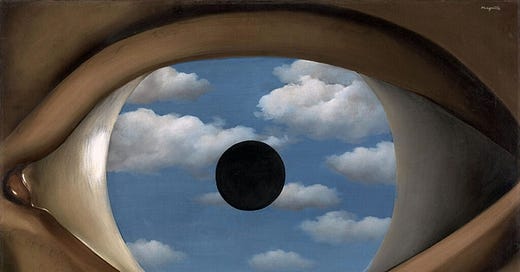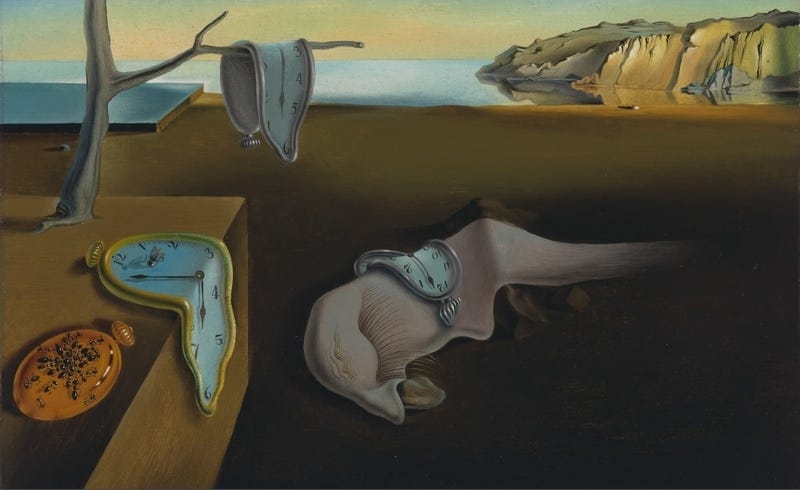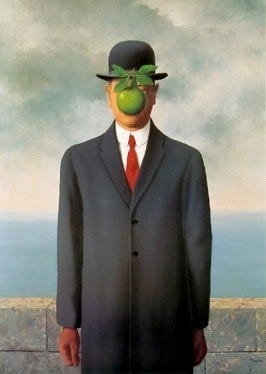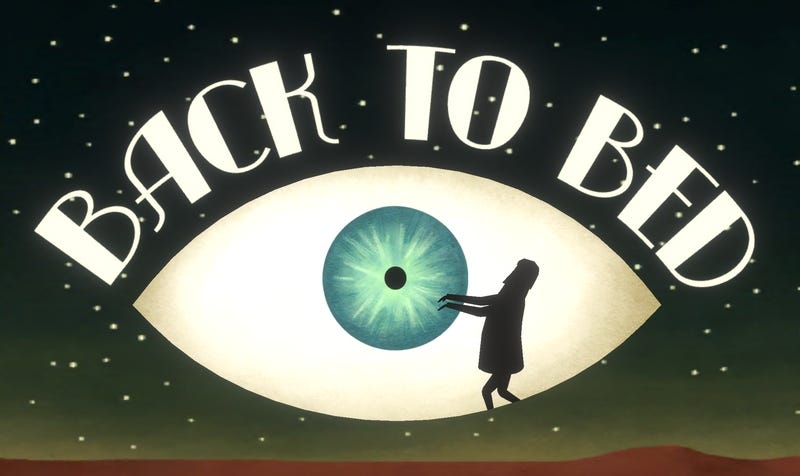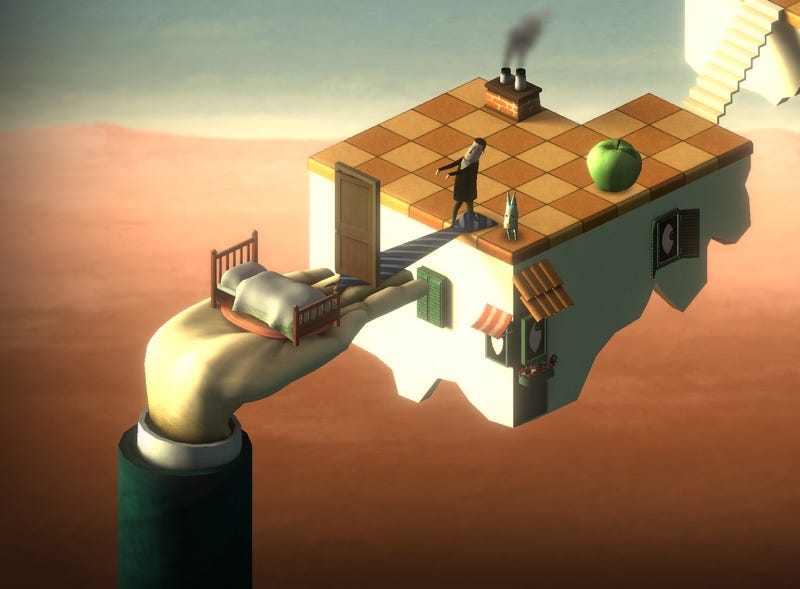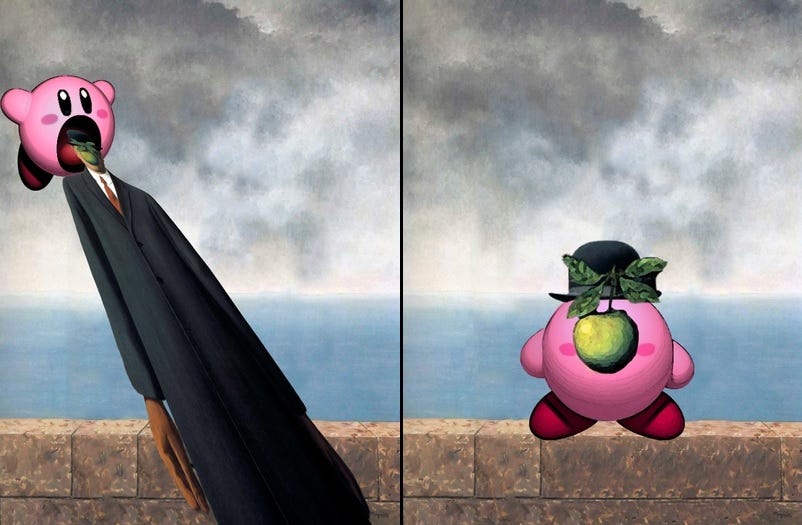Welcome back to Artcade, not a newsletter but a dream where paintings and video games blend into a strange smoothie of human imagination. I don’t know about you, but I’ve always liked smoothies. And dreams too. The problem, if anything, is remembering to wake up (from the dreams, not the smoothies). I'm not sure where I'm going with this, maybe because "certainty" is the furthest thing from today's topic. Let’s remain in this half-awake state and dive into a new episode of Artcade. Enjoy the read!
René Magritte (1928) The False Mirror [Le faux miroir] [Painting] [Oil on canvas] [21.25 in x 31.88 in] MoMA, Museum of Modern Art, New York
Salvador Dalí (1931) The Persistence of Memory [La persistència de la memòria] [Painting] [Oil on canvas] [9.5 in × 13 in] MoMA, Museum of Modern Art, New York
René Magritte (1964) The Son of Man [Le Fils de l'Homme] [Painting] [Oil on canvas] [45.67 in × 35 in] Private Collection
Surrealism is one of the most recognizable art movements of the 20th century, and it’s no coincidence that Magritte also painted Artcade’s avatar. The unsettling atmospheres of these works, halfway between dream and madness, are partly born from the influence that Sigmund Freud and later Carl Gustav Jung had on public discourse in the early 1900s. Their work brought the unconscious and the dream world to the forefront, creating a space in scientific research and art for the less rational aspects of our being. One of Freud’s most famous books, The Interpretation of Dreams, could easily be the title of the video game featured in this episode.
Artcade is a reader-supported publication. Thank you for being one of them. Feel free to send me a feedback. I will read it with great pleasure and consideration.
Bedtime Digital Games (2014) Back to bed [Video game] [Puzzle] [1½ Hour] (iOS) [Android, Nintendo Switch, Windows, Playstation 4/5] Bedtime Digital Games
Back to Bed is a small puzzle game that inhabits the world of dreams and it does so by mixing visual elements borrowed from the Surrealists (the apple, the clock, the eyes hover between homage and outright theft) and giving us the task of protecting a sleepwalker who walks in a straight line, unaware of the dangers around him.
To complete the game’s levels, we’ll need to help the sleepwalker safely return to his bed, but the only way to do so is by taking control of a strange green creature (likely the sleepwalker’s unconscious) and placing giant green apples along his path to change the direction he’s facing. Surreal, without a doubt.
Information Desk:
Before Dalí’s painting was called The Persistence of Memory, it was known as The Soft Watches. Not as evocative, but accurate.
Back to Bed is the first video game from a Danish studio that has come a long way in nearly ten years; their fifth title (Figment 2, which we’ll discuss sooner or later) was just released, and as you can see from their Instagram profile, their taste for the surreal remains unchanged.
Speaking of Instagram, let me highlight a gem: I’m referring to Studiofrizzy, which mixes art, video games, and pop culture with a class and a sixth sense that are highly appreciated here. Below is a small example involving Magritte’s painting and Kirby, a character from Nintendo’s universe, who... well, acts like Kirby.
My last two coins
I like surrealism; I’ve always liked it. Maybe it’s because it blurs reality and transforms it, or perhaps because it shows what we usually can’t see: the imagination of people. For someone like me, constantly lost in his own imagination, it’s a pleasant feeling to see that others also imagine worlds different from ours, where the rules are unusual. The ability to imagine something impossible—isn’t that the most astonishing characteristic of humanity?
If you are reading this, thank you for choosing a paid subscription. Artcade is a project that I am really passionate about and requires time and quality work. Your support pushes me to do even better. Until the next episode, ciao!

